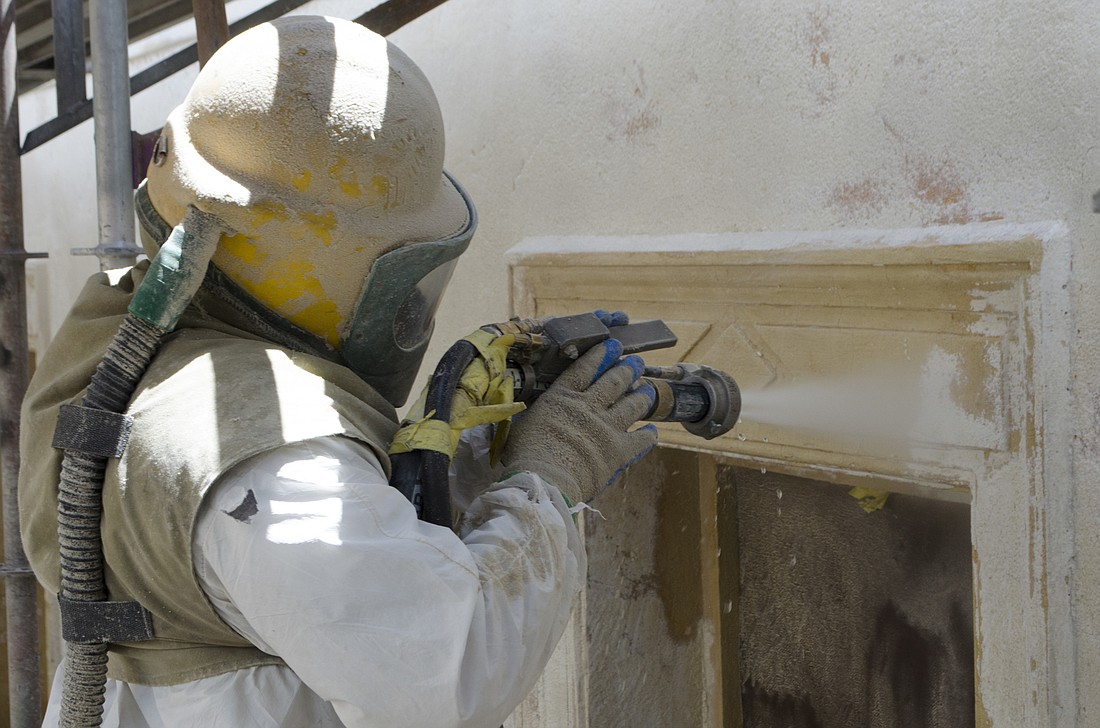- July 5, 2025
-
-
Loading

Loading

Sarasota County’s historic courthouse is taking a step back in time, as workers steadily strip away almost 100 years of paint and stucco that cover the building’s original features.
The changes to the exterior are the final leg of a more than $4 million investment by the county, spanning more than a decade.
Between 2007-2010, the judicial tower was renovated at the historic courthouse at 2002 Ringling Blvd. Between 2010-2014, the roof was replaced. The exterior restorations, which are the final phase, are expected to be done by spring 2018.
“Work like this really needs to be done with a really slow hand,” said Robert Bendus, the county’s historical resources manager. “It needs tender love and care.”
To that end, workers are slowly washing away the layers of material that cover up the original features of the building: ornamentation, ironwork and the original paint colors are all things the county wants to bring back into sharper focus with this project.
Bendus called the building a “restored jewel.”
“All of this work is expensive, but it shows a commitment from the County Commission’s perspective to put resources into the significant and historic buildings that we’re stewards of.”
The building was built on land that was originally home to the Gillespie Golf Course when Sarasota was founded in the 1880s, when John Gillespie came to the area. The courthouse was completed in 1927 — several years after Sarasota was established as a county, and the city and county began sharing a courthouse.
The county brought in Dwight J. Baum, an architect who is also responsible for the Ringling Ca’ d’Zan and whose Spanish medieval revival style was emblematic of the time, and Florida. He brought in tiles from Spain, and Samuel Yellin, an internationally renowned metal worker, to do the iron work for the building.
"There’s an old saying that a community is defined by what they build, but more importantly a community is also defined by what it decides to keep."
The building was finished just before Florida entered the Great Depression ahead of the rest of the nation, Bendus said, giving a new meaning to the phrase “good timing.”
Now, the lengthy process of restoration is coming to an end, and Bendus said it’s perfect timing again.
“The timing of this building is right because we’ve managed to do some incredible restorations to the interior,” he said. “The exterior needs to keep moisture out.”
Restoring the building to its original state after years of alterations is an important way to remember the past, Bendus said.
“Historic places, historic buildings, that is our tangible connection to the past. When we can connect people to the past, to teach history, then they can develop that sense of place . . . It makes us better citizens for the future.”
The courthouse is expected to stay open during construction, and officials don’t expect any disruption to traffic.
Bendus said the time and money put into the courthouse have been worth it.
“There’s an old saying that a community is defined by what they build, but more importantly a community is also defined by what it decides to keep,” he said. “We are stewards. We’re trustees of historic buildings.”